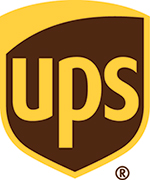UPS Lowers 2014 Guidance, Cites High Peak Season Operating Costs

UPS officials cited an underperforming U.S. domestic segment as the main reason for earnings being lower than previous guidance.
Transportation and logistics bellwether UPS announced that it expects 2014 earnings to come in below its previously stated guidance.
For the fourth quarter of 2014, UPS said it anticipates adjusted diluted earnings per share of roughly $1.25, with full-year 2014 adjusted diluted earnings per share at $4.75, which represents a 3.9 percent annual gain over 2013’s adjusted earnings per share of $4.57, with full-year 2014 diluted earnings pegged at around $3.28 per share, which is 28.9 percent below 2013’s $4.61.
UPS officials cited an underperforming U.S. domestic segment as the main reason for earnings being lower than previous guidance.
The company’s fourth quarter and full-year 2014 earnings will be released on February 3.
It explained that although package volume and revenue results matched up with what the company expected, the company’s operating profit was negatively impacted by what it said were “higher than expected peak-related expenses.”
- Service Levels Remain High Through Holiday Season
- Peak Season Operating Costs Higher than Expected
- Reduces FY2014 Adjusted EPS Estimate to $4.75
- Company Reports $670M After-Tax, Non-Cash Pension Charge
- 2015 Pension Expense and Currency Exchange to be Headwind
- UPS Projects 2015 EPS Growth Slightly Below Long-Term Guidance
“Clearly, our financial performance during the quarter was disappointing,” said David Abney, UPS chief executive officer. “UPS invested heavily to ensure we would provide excellent service during peak when deliveries more than double. Though customers enjoyed high quality service, it came at a cost to UPS. Going forward, we will reduce operating costs and implement new pricing strategies during peak season.”

As previously reported by Logistics Management, peak season preparation was front and center for UPS heading into the fourth quarter. In its second quarter earnings announcement in early August, the company stated that it planned to up the ante for 2014 operating expense for capacity and peak-related projects to $175 million, with some of this capital allocated for things like expanded operations on the day after Thanksgiving, accelerated deployment of route optimization software (ORION), IT development, additional hub sorts and temporary capacity.
“One frequent topic of discussion has been our preparation for peak season. We’ve had meaningful conversations with customers about our plans,” said UPS Abney on the company’s earnings call in August. “These discussions provide the foundation for a joint commitment of forecast volume enabling UPS to better manage how large accounts impact our network. We have made changes to UPS technology that will improve communication with customers. Solutions have been implemented to provide better information on package location and shipment status, ultimately benefitting customers and UPS.”
This forward-looking approach was both smart and needed, given how many supply chain networks, not just UPS’s, dealt with myriad delays and service disruptions during Peak Season in 2013, and left them determined to go down that road again in 2014. And while there were delays and some people did not get their items in time for the holidays, industry estimates suggest it was a relatively modest amount of volume that got lost in the shuffle.
And in September UPS said it planned to hire between 90,000-to-95,000 seasonal employees, topping 2013’s 85,000. UPS said that these seasonal hires are brought on to support “the anticipated holiday surge” for package deliveries commencing in October and running through January.
Even with these changes in place well in advance of Peak Season, UPS said that while extra capacity was necessary to process what it said was an “extreme spike in package volume on Cyber Monday and peak day December 22,” over all demand was less than what was expected in other days, which subsequently resulted in a sub-optimized peak season network in the form of a productivity decline, increased contract carrier rates, costs related to overtime and training hours leading to the excess costs, coupled with network disruptions related to volume fluctuations driven by the ongoing labor- and congestion-related issues at West Coast ports.
Those issues at the West Coast ports caused late arriving shipments to be dropped into the company’s major hubs in California, and shipments moving east that would normally enter its network closer to the final destination, created significant pressure on the network driving costs higher, explained UPS CFO Kurt Kuehn said on an investor call on Friday.
Kuehn added that while UPS achieved strong delivery service levels throughout peak season, it “overshot” the mark with its operating plans and fell short of productivity and profit goals.
“Bottom-line: the network was much less efficient than it should have been on numerous days during peak,” he said. “This drove more than $200 million in excess operating expense. On the revenue side, although we made some progress on surcharges with the control tower initiative this year, yield management will be a more significant component of our peak operating plan next year. Going forward, during this high cost peak period, we will implement price management actions based on customer size and industry segment with the primary focus being on ground residential and SurePost. These are complex issues, and I am confident we are aggressively working on the correct areas, as we’ve said, this is a multi-year initiative. We will provide you more details during the earnings call regarding the cost and revenue actions we plan to take.”
Jerry Hempstead, president of Hempstead Consulting, said this pre-announcement was not surprising, saying the high number of seasonal employees was far too many, calling it a “knee-jerk” reaction to buffer themselves from the fourth quarter delays during the fourth quarter 2013.
“They have been spending and adding facilities and it may pay beck over time, but you cant build a church just for Easter and Christmas,” he told Logistics Management. “This was no surprise to mem and I’m surprised that Wall Street did not see this coming. 95,000 seasonal workers were way too many. We only have two integrators left and the carriers already suspended the service guarantee during the holiday peak.”
Article Topics
UPS News & Resources
UPS announces CFO Newman to leave company, effective June 1 Reveel Expands Shipping Intelligence Platform with New Parcel Carriers Integration Happy Returns Partners With Shein and Forever 21 to Simplify Returns UPS rolls out fuel surcharge increases UPS Struggles in First Quarter With Steep Earnings Decline UPS reports first quarter earnings decline Amazon Logistics’ Growth Shakes Up Shipping Industry in 2023 More UPSLatest in Supply Chain
Indiana Tests Futuristic Highway that Can Charge EVs While Driving Nike Signs 20-Year Lease on New UK Supply Chain Hub The Impact of Amazon Business Prime on Procurement Efficiency Week in Review: Baltimore Bridge Price Tag, FTC Fines Williams-Sonoma, and More Maersk Opens New 90,000-Square-Foot Airfreight Gateway in Miami GXO and Conair Open Maryland’s Largest Distribution Center Shipping Dispute Heats Up: Peloton vs. Flexport More Supply ChainAbout the Author














